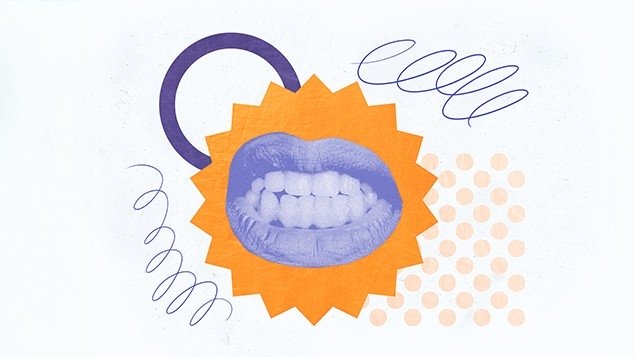- Diseases
- Acoustic Neuroma (14)
- Adrenal Gland Tumor (24)
- Anal Cancer (66)
- Anemia (2)
- Appendix Cancer (16)
- Bile Duct Cancer (28)
- Bladder Cancer (68)
- Brain Metastases (28)
- Brain Tumor (228)
- Breast Cancer (712)
- Breast Implant-Associated Anaplastic Large Cell Lymphoma (2)
- Cancer of Unknown Primary (4)
- Carcinoid Tumor (8)
- Cervical Cancer (154)
- Colon Cancer (164)
- Colorectal Cancer (110)
- Endocrine Tumor (4)
- Esophageal Cancer (42)
- Eye Cancer (36)
- Fallopian Tube Cancer (6)
- Germ Cell Tumor (4)
- Gestational Trophoblastic Disease (2)
- Head and Neck Cancer (6)
- Kidney Cancer (124)
- Leukemia (344)
- Liver Cancer (50)
- Lung Cancer (288)
- Lymphoma (284)
- Mesothelioma (14)
- Metastasis (30)
- Multiple Myeloma (98)
- Myelodysplastic Syndrome (60)
- Myeloproliferative Neoplasm (4)
- Neuroendocrine Tumors (16)
- Oral Cancer (98)
- Ovarian Cancer (172)
- Pancreatic Cancer (166)
- Parathyroid Disease (2)
- Penile Cancer (14)
- Pituitary Tumor (6)
- Prostate Cancer (144)
- Rectal Cancer (58)
- Renal Medullary Carcinoma (6)
- Salivary Gland Cancer (14)
- Sarcoma (234)
- Skin Cancer (294)
- Skull Base Tumors (56)
- Spinal Tumor (12)
- Stomach Cancer (60)
- Testicular Cancer (28)
- Throat Cancer (90)
- Thymoma (6)
- Thyroid Cancer (98)
- Tonsil Cancer (30)
- Uterine Cancer (78)
- Vaginal Cancer (14)
- Vulvar Cancer (18)
- Cancer Topic
- Adolescent and Young Adult Cancer Issues (20)
- Advance Care Planning (10)
- Biostatistics (2)
- Blood Donation (18)
- Bone Health (8)
- COVID-19 (362)
- Cancer Recurrence (120)
- Childhood Cancer Issues (120)
- Clinical Trials (622)
- Complementary Integrative Medicine (22)
- Cytogenetics (2)
- DNA Methylation (4)
- Diagnosis (224)
- Epigenetics (6)
- Fertility (62)
- Follow-up Guidelines (2)
- Health Disparities (14)
- Hereditary Cancer Syndromes (122)
- Immunology (18)
- Li-Fraumeni Syndrome (8)
- Mental Health (116)
- Molecular Diagnostics (8)
- Pain Management (64)
- Palliative Care (8)
- Pathology (10)
- Physical Therapy (18)
- Pregnancy (18)
- Prevention (882)
- Research (384)
- Second Opinion (74)
- Sexuality (16)
- Side Effects (598)
- Sleep Disorders (10)
- Stem Cell Transplantation Cellular Therapy (216)
- Support (404)
- Survivorship (324)
- Symptoms (182)
- Treatment (1764)
What is synthetic nicotine?
2 minute read | Published July 13, 2022
Medically Reviewed | Last reviewed by an MD Anderson Cancer Center medical professional on July 13, 2022
Beating a nicotine addiction is one of the toughest things a person can do, but it can be one of the best things for your health. Nicotine usually consumed through smoking, snorting or chewing leaves from the tobacco plant, which all cause cancer and other health problems. But now companies offer synthetic nicotine – a human-made nicotine that offers a nicotine hit without the tobacco.
We talked to Jennifer Cofer, director of the EndTobacco® program at MD Anderson, to find out about synthetic nicotine and whether it really is safer than other tobacco products.
What is synthetic nicotine?
Synthetic nicotine is made in a lab and marketed as “tobacco-free nicotine” by the tobacco and vape industry. It’s been around for hundreds of years, but the industry just recently revived it to be used in products.
How is synthetic nicotine different from regular nicotine?
Synthetic nicotine has a different chemical makeup than tobacco plant-based nicotine. Unfortunately, we don’t know specifics beyond that because companies are not required to disclose their ingredients and synthetic nicotine content.
Where is synthetic nicotine used?
Synthetic nicotine comes in e-liquid form; it’s used in electronic nicotine delivery systems, otherwise known as e-cigarettes or vapes. There are about 98 products on the U.S. market using synthetic nicotine. These include disposable vape pens, nicotine pouches, nicotine toothpicks and moist snuff.
Is it less addictive than regular nicotine?
This is hard to know because there’s no standard levels of synthetic nicotine to research and understand the full health effects. We do know that nicotine is always harmful to young people. It can impact brain development and damage parts of the brain that control attention, learning, mood and impulse control. No child or young person should use nicotine, synthetic or otherwise. It should also not be used during pregnancy.
Is synthetic nicotine regulated?
The Food and Drug Administration (FDA) used to define nicotine products as derived by tobacco. This created a loophole for a whole market of new products using synthetic nicotine. It also led to a big problem of nicotine addiction in youth. But Congress has now closed this loophole and made it clear that the FDA can regulate tobacco products containing nicotine from any source. Now manufacturers, distributors, importers and retailers of tobacco products containing synthetic nicotine must follow all rules associated with tobacco. That means they can’t sell these products to people under 21, or market them as low-risk tobacco products without authorization. They also cannot distribute free samples of these products.
What’s the most important thing you want readers to understand about synthetic nicotine?
Synthetic nicotine is still nicotine. Even though we don’t know how addictive it is compared to tobacco-based nicotine, it is still addictive and, most importantly, can still cause the same damage to developing brains.
Request an appointment at MD Anderson online or by calling 1-877-685-1904.

Synthetic nicotine led to a big problem of nicotine addiction in youth.
Jennifer Cofer
Director, EndTobacco®





